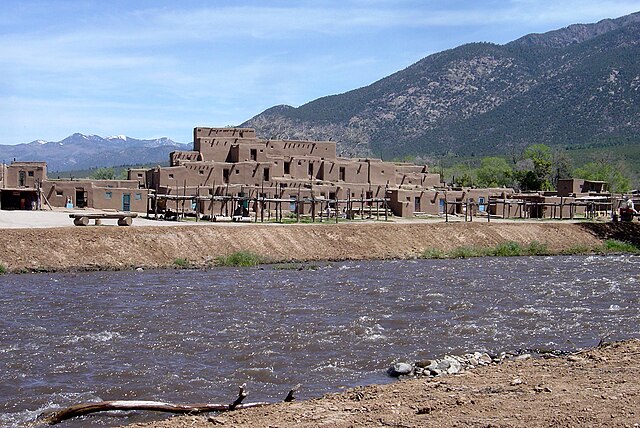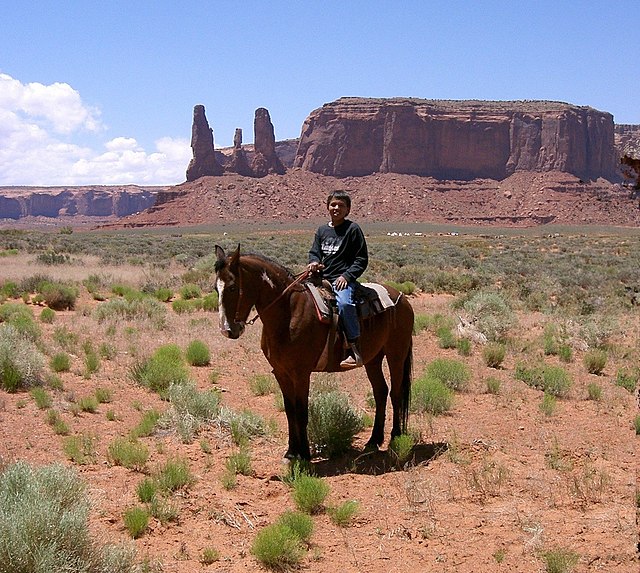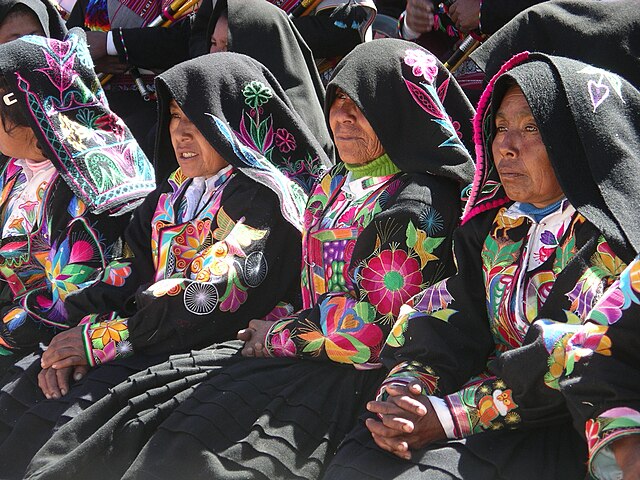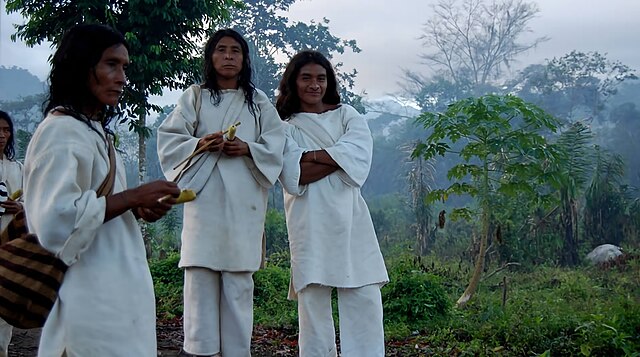The history of the Americas begins with people migrating to these areas from Asia during the height of an ice age. These groups are generally believed to have been isolated from the people of the "Old World" until the coming of Europeans in the 10th century from Iceland led by Leif Erikson, and in 1492 with the voyages of Christopher Columbus.
Stemmed fluted "Fishtail" point found in Belize
The Great Kiva of Chetro Ketl at the Chaco Culture National Historical Park, UNESCO World Heritage Site
Cliff Palace, Mesa Verde National Park, a UNESCO World Heritage Site
Taos Pueblo, a UNESCO World Heritage Site, is an Ancient Pueblo belonging to a Native American tribe of Pueblo people, marking the cultural development in the region during the Pre-Columbian era.
Indigenous peoples of the Americas
The Indigenous peoples of the Americas are groups of people native to a specific region that inhabited the Americas before the arrival of European settlers in the 15th century and the ethnic groups who continue to identify themselves with those peoples.
A Navajo boy in the desert in present-day Monument Valley in Arizona with the "Three Sisters" rock formation in the background in 2007
Wayuu women in the Guajira Peninsula, which comprises parts of Colombia and Venezuela
Quechua women in festive dress on Taquile Island on Lake Titicaca, west of Peru
The Kogi, descendants of the Tairona, are a culturally intact, largely pre-Columbian era society.








